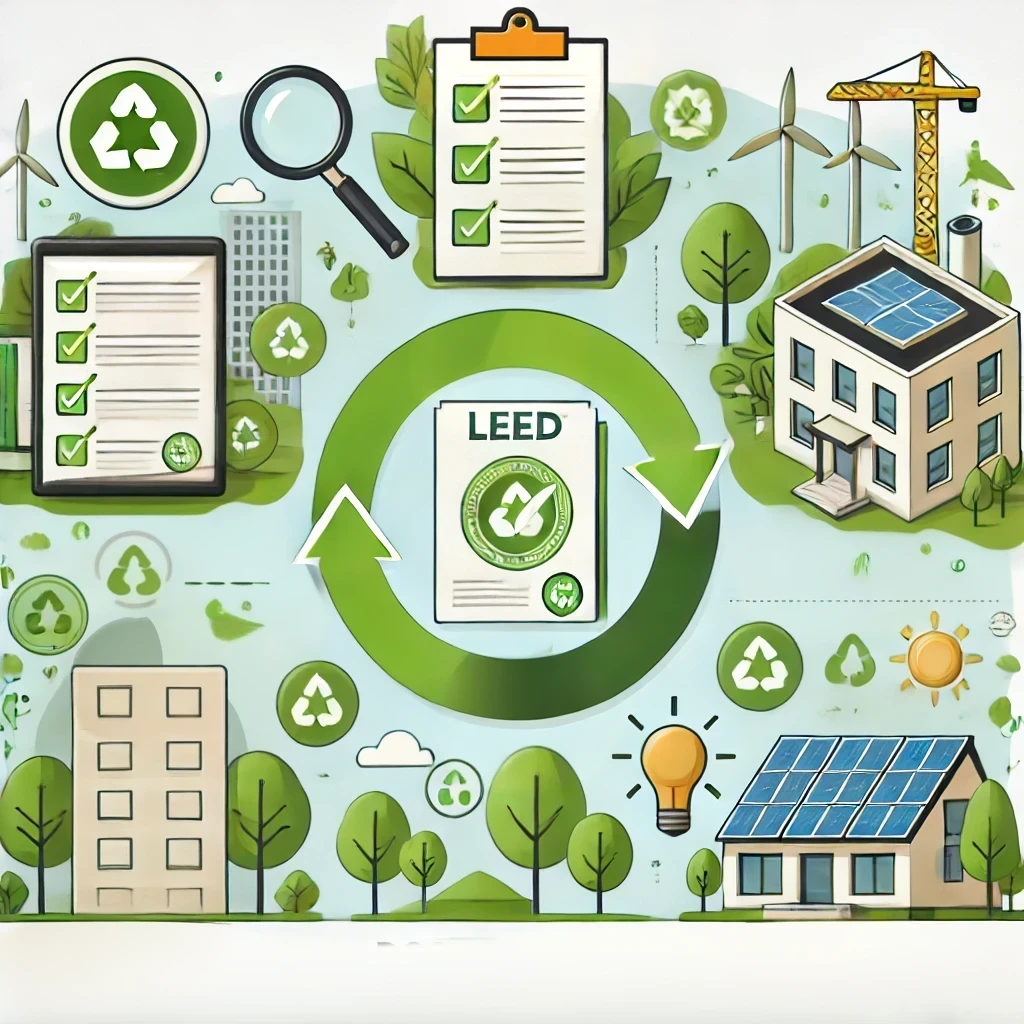The Leadership in Energy and Environmental Design (LEED) certification is a globally recognized framework for promoting sustainable building design, construction, operation, and maintenance. Developed by the U.S. Green Building Council (USGBC), LEED helps organizations improve energy efficiency, reduce environmental impact, and create healthier spaces for occupants.
The certification process involves several key steps, each designed to ensure that a project meets stringent environmental standards and sustainability goals.
1. Choose the Appropriate LEED Rating System
LEED offers multiple rating systems tailored to different project types:
- Building Design and Construction (BD+C): For new buildings or major renovations.
- Interior Design and Construction (ID+C): For commercial interiors and tenant improvements.
- Building Operations and Maintenance (O+M): For existing buildings undergoing improvements.
- Neighborhood Development (ND): For community-scale projects.
- Homes: For residential projects.
Selecting the appropriate system ensures that the project meets relevant sustainability criteria and performance benchmarks.
2. Meet Minimum Program Requirements (MPRs)
Before beginning the certification process, projects must meet LEED Minimum Program Requirements (MPRs):
- Permanent Location: The project must be built on legally owned or leased land and be a permanent structure.
- Reasonable LEED Boundaries: Projects should define clear site boundaries that include all functional spaces.
- Project Size Requirements: Projects must meet minimum size requirements depending on the rating system (e.g., 1,000 sq ft for BD+C).
3. Satisfy LEED Prerequisites
Each LEED rating system includes mandatory Prerequisites that projects must fulfill to qualify for certification. Common prerequisites include:
- Energy Efficiency: Compliance with energy performance standards (e.g., ASHRAE 90.1).
- Water Conservation: Implementing strategies for water use reduction.
- Indoor Environmental Quality: Ensuring proper ventilation, air quality, and control of tobacco smoke.
- Sustainable Sites: Reducing environmental disruption and managing stormwater runoff.
4. Register the Project
To begin the formal certification process, project teams must:
- Create an account on LEED Online.
- Pay the registration fee.
- Submit project details and documentation for review.
5. Implement LEED Credits
After satisfying prerequisites, teams can pursue optional LEED credits in various categories to earn points toward certification. Categories include:
- Location & Transportation: Promoting access to public transit and walkability.
- Water Efficiency: Implementing water-saving measures.
- Energy and Atmosphere: Reducing energy consumption through design and technology.
- Materials and Resources: Using sustainable, recycled, and locally sourced materials.
- Indoor Environmental Quality: Improving lighting, air quality, and acoustics.
- Innovation: Incorporating novel sustainable strategies.
- Regional Priority: Addressing region-specific environmental issues.
6. Submit for LEED Review
Once all documentation is complete, the project team submits it for review through LEED Online. The USGBC or Green Business Certification Inc. (GBCI) will:
- Conduct a Preliminary Review and provide feedback.
- Allow project teams to make necessary adjustments.
- Issue a Final Review before determining the final score.
7. Achieve LEED Certification Level
LEED certification levels are determined based on the total number of points earned:
- Certified: 40–49 points
- Silver: 50–59 points
- Gold: 60–79 points
- Platinum: 80+ points
Higher point totals reflect a greater commitment to sustainability and resource efficiency.
8. Certification Maintenance
For ongoing performance, certain LEED certifications—particularly LEED O+M—require regular reporting and recertification every 3–5 years to maintain sustainability standards.
Conclusion
The LEED certification process encourages sustainable practices and energy efficiency across the entire lifecycle of a building. By following the steps of registration, compliance with prerequisites, and earning LEED credits, projects can demonstrate their commitment to environmental responsibility, operational savings, and occupant well-being.
Achieving LEED certification not only enhances a building’s performance but also positions organizations as leaders in sustainability and innovation within the built environment.

